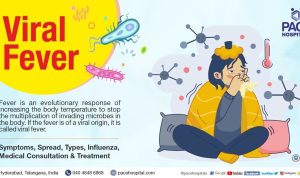Viral Insurance Innovations Empowering Low Income Families shines a spotlight on transformative solutions aimed at improving the lives of low-income households. As the financial landscape evolves, innovative insurance products emerge to address the unique challenges faced by these families, making essential protections accessible and affordable.
These innovations not only provide security but also promote financial literacy and resilience, allowing families to navigate unforeseen circumstances with greater confidence. By leveraging technology and community-driven approaches, these insurance models are reshaping the industry and fostering inclusivity.
In today’s fast-paced world, the importance of effective communication cannot be overstated. Whether in personal, academic, or professional settings, the ability to convey thoughts clearly and persuasively is a skill that can significantly influence outcomes. This article will delve into the nuances of effective communication, exploring its key elements, the barriers that often hinder it, and practical strategies to enhance one’s communication skills.### The Essence of Effective CommunicationEffective communication is more than just exchanging information; it involves understanding the emotions and intentions behind the information.
It’s a dynamic process that includes several core components:
1. Clarity
This is the foundation of effective communication. When conveying a message, it’s essential to be clear and concise. Avoiding jargon and using straightforward language can help ensure your message is understood as intended.
2. Active Listening
Communication is a two-way street. Engaging in active listening—where you fully concentrate, understand, respond, and then remember what is being said—can foster better relationships and ensure that all parties feel heard and valued.
3. Empathy
Understanding the feelings and perspectives of others is crucial. Demonstrating empathy can strengthen connections and create a more collaborative environment. When individuals feel understood, they are more likely to communicate openly.
4. Nonverbal Cues
Body language, facial expressions, and tone of voice play significant roles in how messages are interpreted. Being aware of and managing nonverbal signals can enhance the effectiveness of verbal communication.
5. Feedback
Providing and soliciting feedback is essential for improvement. It helps clarify misunderstandings and reinforces the message. Constructive feedback can motivate and guide individuals toward better communication practices.### Common Barriers to Effective CommunicationDespite the best intentions, various barriers can impede effective communication. Recognizing these barriers is the first step in overcoming them:
Physical Barriers
These include environmental factors such as noise, distance, and technology issues that can disrupt communication.
Psychological Barriers
Stress, anxiety, or preconceived notions can block effective communication. When individuals are not in the right frame of mind, it can adversely affect their ability to listen and respond.
Cultural Barriers
Differences in cultural backgrounds can lead to misunderstandings. Awareness of cultural norms and values is crucial for effective cross-cultural communication.
Language Barriers
This includes not only different languages but also variations in dialects and jargon. Miscommunication can occur when individuals are not on the same linguistic page.
Perceptual Barriers
Individual perceptions and interpretations can vary widely. What one person sees as a compliment may be interpreted as sarcasm by another, leading to misunderstandings.### Strategies to Enhance Communication SkillsImproving communication skills is an ongoing process that requires practice and dedication. Here are some practical strategies to enhance your communication abilities:
1. Practice Active Listening
Engage in conversations with the intent to understand rather than respond. This involves giving full attention to the speaker, acknowledging their message, and responding thoughtfully.
2. Clarify and Confirm

After hearing a message, paraphrase what you’ve understood and seek confirmation. This not only shows that you are engaged but also helps identify any misinterpretations upfront.
3. Be Mindful of Nonverbal Communication
Pay attention to your body language and the nonverbal signals of others. Ensure that your nonverbal cues align with your verbal messages to minimize confusion.
4. Expand Your Vocabulary
A rich vocabulary can enhance your ability to express ideas clearly. Reading widely and learning new words can help you become more articulate.
5. Adjust Your Communication Style
Tailor your communication approach based on your audience. Understanding the preferences and needs of your audience can lead to more effective exchanges.
6. Seek Feedback Regularly
Invite others to provide feedback on your communication style. This can help you identify areas for improvement and encourage a culture of open dialogue.
7. Engage in Public Speaking
Join groups or workshops that focus on public speaking. This can build confidence and improve your ability to communicate in various contexts.
8. Take Communication Courses
Formal education can provide structured learning and valuable insights into advanced communication techniques.### The Role of Technology in CommunicationIn recent years, technology has revolutionized the way we communicate. From emails and instant messaging to video conferencing platforms, technology offers various tools that can enhance communication. However, it’s essential to navigate these tools thoughtfully:
Choose the Right Medium
Not all messages are suited for every platform. Complex issues are often better addressed in person or via video calls, while simple updates can be effectively communicated through emails or messages.
Be Aware of Tone
Written communication lacks the nonverbal cues present in face-to-face interactions, making it easy for messages to be misinterpreted. Use clear language and, when appropriate, emojis or exclamation marks to convey tone.
Limit Distractions
When communicating via technology, eliminate distractions to maintain focus. This includes silencing notifications and setting aside dedicated time for conversations.
Follow Up
In digital communications, it’s easy for messages to get lost. Following up ensures that important conversations are not overlooked and reinforces your commitment to effective communication.### The Impact of Effective CommunicationThe benefits of honing effective communication skills extend far beyond personal interactions. In professional settings, strong communication can lead to enhanced teamwork, increased productivity, and improved morale. Clear communication fosters a culture of transparency and trust, allowing organizations to navigate challenges more effectively.Furthermore, effective communication can also enhance personal relationships.
Whether with friends, family, or romantic partners, the ability to express oneself and listen actively fosters deeper connections and reduces conflict.### ConclusionIn conclusion, effective communication is a vital skill that requires continuous effort and practice. By understanding its core components, recognizing barriers, and implementing strategies for improvement, individuals can enhance their ability to communicate effectively. As we navigate an increasingly interconnected world, mastering the art of communication will prove invaluable in fostering understanding, collaboration, and success in various aspects of life.
Query Resolution: Viral Insurance Innovations Empowering Low Income Families
What are viral insurance innovations?
Viral insurance innovations refer to new insurance products or services that effectively address the needs of low-income families, often leveraging technology and community engagement.
How do these innovations benefit low-income families?
They provide affordable coverage options and enhance financial literacy, helping families manage risks and improve their financial stability.
Are viral insurance innovations accessible to everyone?
While designed to be inclusive, accessibility may vary by region and the specific offerings of each insurance provider.
What role does technology play in these innovations?
Technology streamlines the application process, enhances customer service, and allows for personalized insurance solutions based on individual needs.
Can these innovations help with specific financial challenges?
Yes, they are often tailored to address specific challenges such as health care costs, housing security, and unexpected emergencies.













